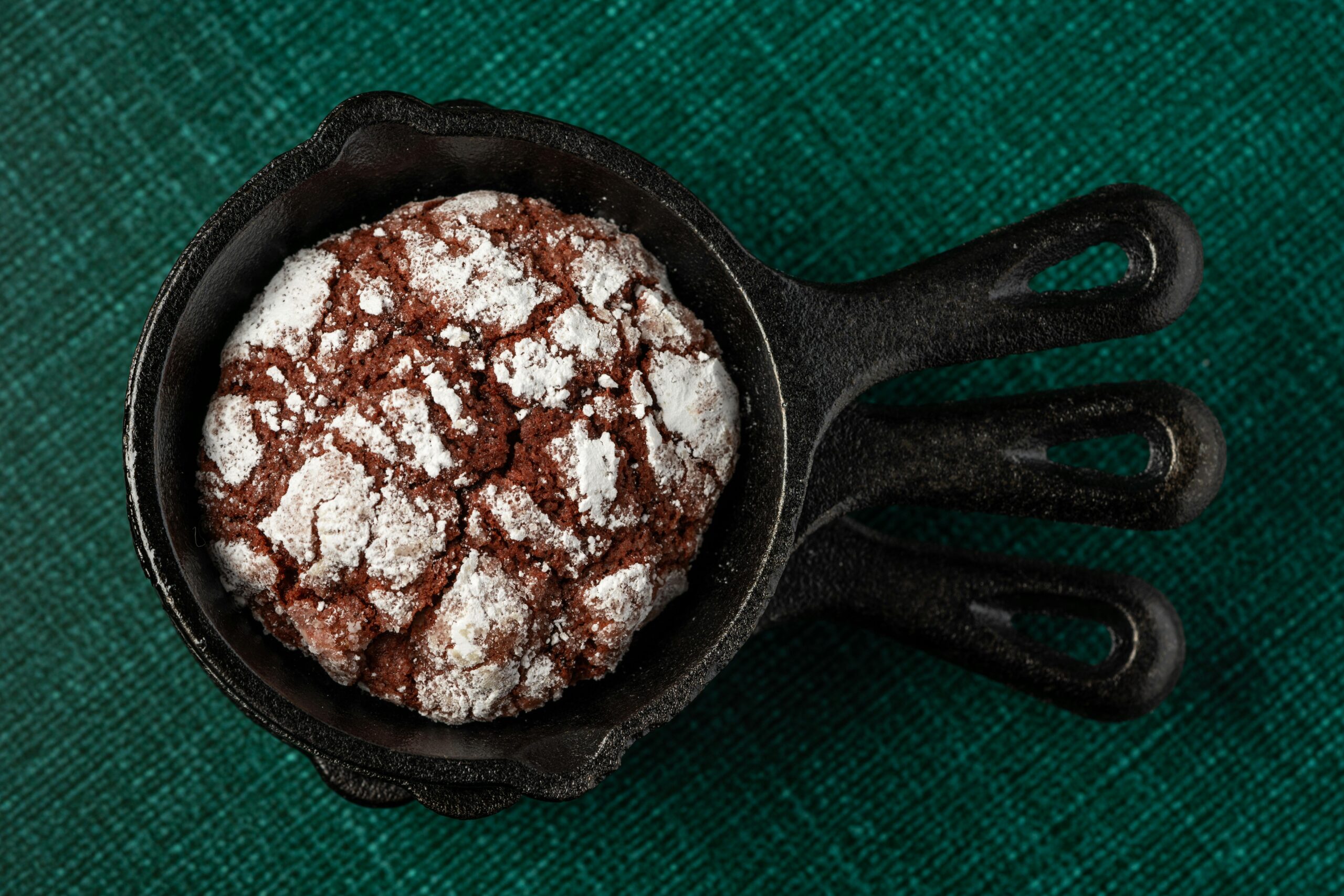You can learn about how to clean cast iron skillet with our comprehensive guide. Discover essential tools and supplies, step-by-step cleaning instructions, and tips for maintaining the perfect seasoning. Whether you’re dealing with stubborn residue, rust, or simply performing routine maintenance, our expert advice ensures your cast iron skillet stays in top condition.
From removing food particles and applying oil to troubleshooting common issues, we cover everything you need to know. Embrace the tradition of cast iron cooking and keep your skillet a reliable kitchen tool for years to come. Perfect for both beginners and seasoned cooks, this guide makes cast iron care simple and effective.
Table of Contents
Introduction
Cast iron skillets are a beloved kitchen staple, cherished for their durability, heat retention, and versatility. However, maintaining these kitchen workhorses can be intimidating for the uninitiated. The key to keeping your cast iron skillet in top condition is understanding how to clean and care for it properly. This pillar article will provide you with a comprehensive guide on how to clean your cast iron skillet, ensuring it remains a reliable tool in your culinary arsenal for years to come.
Understanding Cast Iron
The Unique Properties of Cast Iron
Cast iron is prized for its ability to evenly distribute and retain heat, making it perfect for cooking a wide range of dishes. The material itself is porous, which allows it to develop a natural, non-stick surface over time through a process called seasoning. This seasoning is crucial for the skillet’s performance and longevity.
The Importance of Seasoning
Seasoning is the process of baking oil into the surface of the cast iron, creating a protective layer that prevents rust and enhances the skillet’s non-stick properties. Properly seasoned cast iron not only cooks food beautifully but also becomes easier to clean and maintain.
Tools and Supplies You’ll Need
To effectively clean and maintain your cast iron skillet, you’ll need a few essential tools and supplies:
Stiff Brush or Scrubber: A brush with stiff bristles or a dedicated cast iron scrubber can help remove food particles without damaging the seasoning.
Mild Dish Soap: While some purists avoid soap altogether, a small amount of mild dish soap can be used if needed.
Plastic Scraper: A plastic scraper can help remove stuck-on food without scratching the skillet.
Coarse Salt: Coarse salt can be used as an abrasive to scrub away stubborn residue.
Paper Towels or a Clean Cloth: For drying and applying oil after cleaning.
Cooking Oil: To maintain the skillet’s seasoning, you’ll need a neutral oil with a high smoke point, such as vegetable oil, canola oil, or flaxseed oil.
Step-by-Step Guide: How to Clean Cast Iron Skillet
1. Cleaning Immediately After Use
The best time to clean your cast iron skillet is right after use, while it is still warm. Follow these steps to clean your skillet immediately after cooking:
Remove Food Residue: Use a stiff brush or scrubber to remove any food particles. If necessary, add a small amount of warm water to help loosen the residue.
Use Mild Soap if Needed: If there’s stubborn residue that won’t come off with water alone, you can use a small amount of mild dish soap. Avoid using harsh detergents or steel wool, as these can damage the seasoning.
Scrub with Coarse Salt (Optional): For particularly stubborn bits, sprinkle coarse salt into the skillet and scrub with a brush or cloth. The salt acts as a gentle abrasive that won’t harm the seasoning.
Rinse and Dry Thoroughly: Rinse the skillet with warm water and immediately dry it with paper towels or a clean cloth.
Reapply Oil: Once the skillet is dry, apply a thin layer of cooking oil to the surface. Use a paper towel or cloth to spread the oil evenly, both inside and outside the skillet.
2. Deep Cleaning for Stubborn Residue
Sometimes, your cast iron skillet might require a more thorough cleaning to remove built-up residue or restore its seasoning. Here’s how to deep clean your skillet:
Make a Baking Soda Paste: This paste can help remove stubborn residue without damaging the seasoning.
Apply the Paste: Spread the baking soda paste over the areas with stubborn residue.
Scrub Gently: Use a brush or scrubber to gently scrub the skillet, focusing on the areas with the baking soda paste. Avoid using excessive force to prevent damaging the seasoning.
Rinse and Dry: Rinse the skillet thoroughly with warm water and dry it immediately.
Re-season if Necessary: If the skillet’s seasoning has been significantly affected, you may need to re-season it. To do this, apply a thin layer of oil to the skillet and bake it in the oven at 400°F (200°C) for about an hour. Let it cool in the oven before storing.
Removing Rust from a Cast Iron Skillet
Rust can form on cast iron skillets if they are exposed to moisture for extended periods. Here’s how to remove rust and restore your skillet:
1. Scrub Away the Rust
Use a stiff brush, steel wool, or a dedicated cast iron scrubber to scrub away the rust. This may take some elbow grease, but it’s essential to remove all the rust to prevent it from spreading.
2. Rinse and Dry
Wash with hot water and then dry. Make sure that there is no water on the surface.
3. Re-season the Skillet
Once the rust is removed and the skillet is dry, apply a thin layer of oil to the entire surface, including the handle. Bake the skillet in the oven at 400°F (200°C) for about an hour to restore the seasoning. Allow it to cool in the oven before using or storing.
Tips for Maintaining Your Cast Iron Skillet
Proper maintenance is key to ensuring your cast iron skillet remains in excellent condition. Here are some tips to help you keep your skillet in top shape:
1. Avoid Soaking in Water
Never soak your cast iron skillet in water, as prolonged exposure to moisture can lead to rust. Instead, clean it immediately after use and dry it thoroughly.
2. Store in a Dry Place
Store in a dry place and you can also place a paper towel inside the skillet to absorb any excess moisture.
3. Regularly Reapply Oil
After each cleaning, reapply a thin layer of oil to the skillet to maintain the seasoning and prevent rust. This simple step will keep your skillet in optimal condition.
4. Avoid Cooking Acidic Foods
While cast iron is durable, cooking highly acidic foods (such as tomatoes or citrus) can erode the seasoning over time. If you do cook acidic foods, make sure to re-season the skillet afterwards.
5. Use the Skillet Regularly
Frequent use helps maintain the skillet’s seasoning. The more you cook with it, the better it will perform.
Troubleshooting Common Issues
Despite your best efforts, you may encounter some common issues with your cast iron skillet. Here are solutions to a few typical problems:
1. Sticky Surface
If your skillet feels sticky, it may be due to excess oil or improper seasoning. To fix this, scrub the skillet with coarse salt, rinse, dry, and re-season with a thin layer of oil.
2. Flaking Seasoning
Flaking or peeling seasoning usually occurs if the skillet wasn’t properly seasoned. Scrub off the loose seasoning, rinse, dry, and re-season the skillet.
3. Food Sticking to the Surface
If food is sticking, it could be due to insufficient seasoning or cooking at too low a temperature. Ensure your skillet is well-seasoned and preheat it properly before cooking.
Conclusion
Cleaning and maintaining a cast iron skillet may seem daunting at first, but with the right knowledge and techniques, it becomes a straightforward process. By following the steps outlined in this guide, you can ensure your cast iron skillet remains a reliable and versatile tool in your kitchen for years to come. Embrace the tradition of cast iron cooking, and enjoy the unique benefits it brings to your culinary creations.
FAQs
1. Is it possible to use soap for cleaning cast iron skillet?
Yes, you can use a small amount of mild dish soap if needed. However, avoid using harsh detergents or soaking the skillet in soapy water, as this can strip away the seasoning.
2. How often should cast iron skillets be re-seasoned?
It’s a good idea to re-season your skillet every few months or whenever the surface looks dull or dry. Regularly applying a thin layer of oil after each cleaning helps maintain the seasoning.
3. Can I use my cast iron skillet on a glass-top stove?
Yes, you can use a cast iron skillet on a glass-top stove, but be cautious not to slide it across the surface to avoid scratching. Lift the skillet when moving it.
4. What should I do if my cast iron skillet develops rust?
If rust appears, scrub it off with a stiff brush or steel wool, rinse, dry thoroughly, and re-season the skillet. Regularly applying oil and keeping the skillet dry can prevent rust from forming.
5. Can I cook acidic foods in my cast iron skillet?
While you can cook acidic foods in a cast iron skillet, frequent cooking of highly acidic foods can erode the seasoning. If you do cook acidic foods, re-season the skillet afterwards to maintain the seasoning.
Final Thoughts
Taking care of a cast iron skillet is a rewarding endeavor that pays off with a versatile, durable, and highly effective cooking tool. With proper cleaning and maintenance, your cast iron skillet will not only last a lifetime but also improve with age, providing you with countless delicious meals. Embrace the heritage of cast iron cooking, and enjoy the many benefits it brings to your kitchen.



